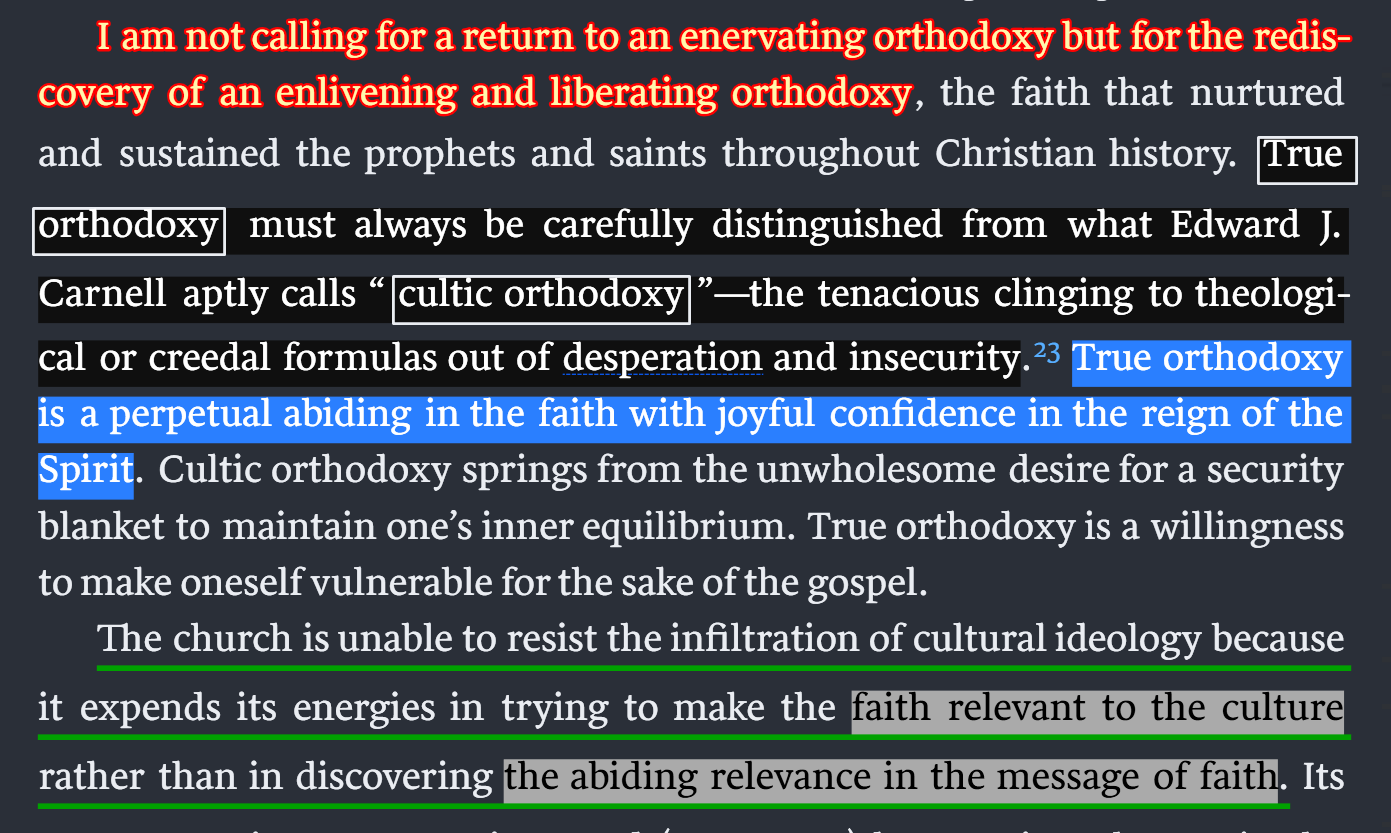How To Read Deeply (On How I Read): Pt 2
This is my no-nonsense guide to reading well. Straight to the point and quick. Continuation of my Autobiography of me and reading.
This is a continuation of the Pt 1 of falling in love with reading again.
in this part I’ll be covering the practices that I employ when it comes to reading.
Deep Reading and Shallow reading
There are two ways to read:
Deep Reading and Shallow Reading.
Shallow reading involves skimming, identifying key points, and filtering out inessentials. It is a low engagement with the text, aimed at basic comprehension.
Deep reading entails a comprehensive grasp of the text and taking note of its contours. It represents high engagement with the text, promoting critical reflection in relation to your existing knowledge.
Most of us operate with shallow reading on a daily basis.
But do not fret!
The goal is not to discard shallow reading altogether.
Rather, it is to identify beforehand what kind of reading you will be doing prior to engaging with the content.
We are bombarded by massive amounts of content daily (emails, messages, news, and so on). To filter through the junk, we need to employ the right reading mode.
For example:
When I’m reading a book, I switch to deep reading mode to properly engage with it. I use a rectangular bookmark that underlines the text I’m reading to prevent myself from “jumping ahead.”
When I’m reading my daily news, I skim to identify if the piece is worth reading. If it’s worth reading, I switch to deep reading mode and digest the content. If it’s truly a good piece, I’ll get the weblink, place it in my notebook, and write down a few thoughts.
At work, with all the different group chats, I’m in shallow reading mode until it truly necessitates my attention to focus on one conversation.
Actionable: Before engaging with your chosen piece of content, select the kind of reading you will be doing.
How to Deep Read?
Engagement, Engagement, Engagement!
Most of us think that Reading is One-directional. We are allowing the book to speak to us.
This makes us the passive recipient.
This is ok for shallow reading but NOT for deep reading.
In Deep Reading, we engage with the text and enter a conversation with the Author.
We find points we agree, unsure, disagree and so on and so forth. By entering the conversation, we start making connections from our existing knowledge base to synthesize new information.
This makes you an active recipient.
The way I do this is using my own highlighting system + taking vigorous notes.
My (complicated) highlighting system.
This was the game changer for me. I have a very comprehensive highlighting system that allows me to engage the text.
Nonetheless, my goal is to get you thinking about your highlighting system and what you want to implement.
I use three distinct highlighting categories:
The authors thoughts.
What is the author arguing for? What is his main thesis?
The text and its characteristics.
How is the text written? What is the argument? What are the key words?
My thoughts.
What do I think about the text? Does it make sense? Have I heard this before?
These categories are not very “clear cut” and they might overlap, but that’s ok. We are not looking for precision but engagement with the text.
This active element of highlighting forces your brain to categorize everything you read. Thus, creating an active element that allows for stronger retention and deeper comprehension.
Ps: When I’m reading a book, I use a similar system but with a pencil. I’ll underline the content and write a corresponding alphabet that tracks the category. Eg: A-Agree, D-Disagree and etc.
The Author’s Thoughts
The first step is to figure out what the author is arguing for.
The key highlights is the premise and conclusion, which indicate the premises of the paragraph and the conclusion.
For example:
In this paragraph. I’ve identified the premise of the entire paragraph, so I highlight that section with the premise highlighter. However, within this entire premise there’s a place I want to emphasize on. So, I use the Emphasis highlighter on the first part.
When I go back to recap my notes, I can identify the section as well as the key line.
The Text and it’s Characteristics
The second thing is to focus on how the text was written and how the author is making the point.
Each of these falls into a category of how the author is arguing for.
Most of it is self-explanatory. Historical implies a historical fact/argument. Contrast is when the author contrasts two distinct opposites.
Argument is when the author is characterizing the intellectual opponent, so I have a separate highlight to ensure that it’s not conflated with the author’s own argument.
My Thoughts
Lastly, what do I think of the text. Agree? Disagree?
It’s a 5-color scale, from Disagree to Agree. It’s pretty self-explanatory.
But here’s a pro tip:
Having a dedicated highlighter for things that you are unsure of or disagree with is powerful because it allows you to express your disagreement explicitly.
Prior to this, when I disagreed with something, it was hard to put down that thought as I continued reading. But by using a clear highlighter that explicitly indicates your disagreement, you can leave that thought and proceed.
"Sensible" is when I find the line of argumentation reasonable but do not necessarily agree with it. "Intriguing" is my catch-all highlighter for anything I find strange, new, or interesting.
So, here’s an example of how all of it works together.
When I revisit this in the future. I immediately have a quick snapshot of my original thoughts as well as key items in the passage.
Oh Yeah, don’t forget about Note Taking.
On top of your highlights, take all the notes you want. Write down your thought process, your emotional reaction and everything in between.
For me, I will take down a note when I’m aware of another person/viewpoint that disagrees with the author. So instead of focusing on your own thoughts, you can also practice impersonating other viewpoints to identify points of agreement and interest.
Actionable Step: Think of a simple highlighting system that you would like to use. Don’t fret if it’s simple, you can adjust as you go along. Better start with something rather than nothing at all.
Tips for Dealing with Reading Technology
Different kinds of reading technology encourage a certain mode of reading. (The technical term is affordances.)
A book is most conducive to deep reading. There are no notifications and no pathways to artificially distract yourself. Nonetheless, to engage with the text, I would recommend using a pencil and a bookmark or ruler.
Then come the digital devices… Oh! The horror!
Tip 1: Disable Notifications for Deep Reading
If you want to engage in deep reading on your devices, disable your notifications. This could be a short-term block or a permanent solution.
For me, I do my reading on my tablet.
Even though my tablet has all messaging applications (WhatsApp, Messenger, and Teams), I have decided beforehand that I WILL NOT ALLOW any form of notification at all on my tablet (no sound, no messages, no floating notifications, and not even home-screen notifications).
I have consecrated this device for reading. Similarly, you can buy a tablet or Kindle and likewise consecrate the device for reading only.
Tip 2: Different Devices Tempt You Differently
We all use our devices differently, so each individual is more prone to distraction on certain devices compared to others.
Think about your digital habits and figure out what works best for you.
For me, I try to avoid reading on my phone. My phone is primarily a communication device. The notifications are turned on by default, and I associate my phone with other activities.
It will be difficult to change my reading habits on my phone.
Tip 3: Create a Dedicated Environment for Reading
Choose a specific spot to practice deep reading.
Soon enough, you will associate that space with reading and find it easier to concentrate there.
Assortment of Random Tips
Tip 1: Don’t Be Afraid to Read Multiple Kinds of Books at Once
I am currently reading at least ten different books simultaneously.
They span various genres and complexities so I can match the right book to my current mood.
I have easy reads, difficult reads, long reads, short reads, etc.
You might even consider reading anthologies (compilations of short essays), since you don’t need to know the previous section to read the current one.
I even have a "toilet read"! (I read encyclopedia entries when I’m in the toilet; they are the perfect length for that occasion.)
Tip 2: Review Your Reading Adventure Daily
To retain information better, review your reading adventure for the day. In your mind, quickly recall what you read. Alternatively, flip back through the pages you covered in that session.
This short and simple step is effective and serves as a ritual to mark the end of your reading session.
Tip 3: Have Quiet Moments to Reflect on What You Read
Having dedicated silent moments in your day is a game changer. Turn off Spotify, podcasts, YouTube, and your newsfeed; just embrace the silence.
Go for a walk and let your thoughts wander. You will be surprised by what you' will find in the quiet.
Tip 4: Explain Key Concepts to Someone Else
To gauge how well you understand a book, try explaining its key concepts to someone else.
Inspired by the Feynman technique, you only truly grasp something when you can articulate it clearly to another person.
Tip 5: Chill! Relax!
There is no competition.
For most of us, reading is a hobby. Don’t force yourself to read if you don’t feel like it.
Once again, I would like to end with this quote:“It’s not about being well-read; it’s about reading well.”
Conclusion
BAM! There you go—how to read deeply; my how-to guide. I hope it helps you in your journey toward deep reading.
Now! Time for me to go away and do my own deep reading!










Wow, that’s a very organised and strategic way to read deeply. Great write up.